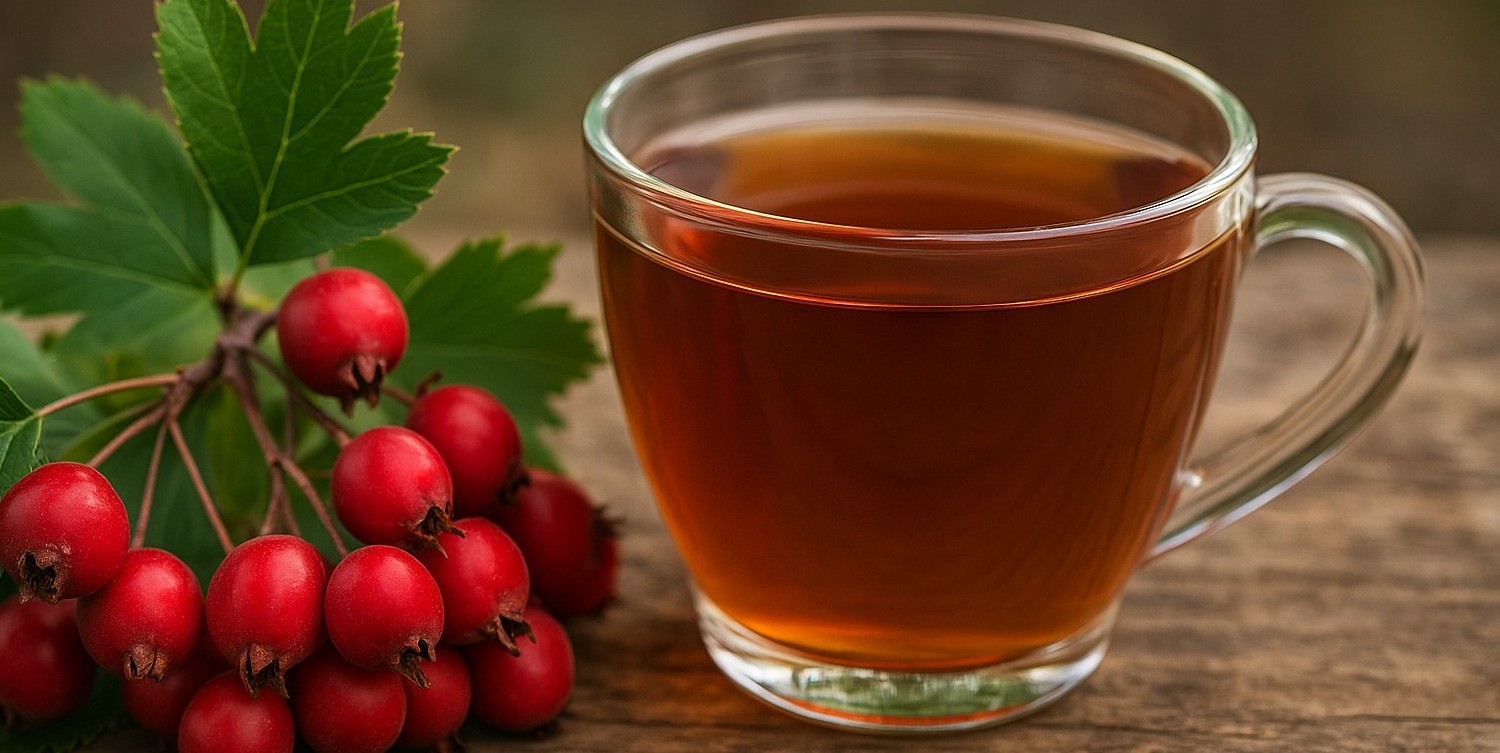
Hawthorn Berry Tea: A Heart-Healthy Herbal Brew
Hawthorn (Crataegus spp.) is a thorny shrub native to temperate regions of the Northern Hemisphere. Its bright red berries—“haws”—have been used since ancient Rome as a cardiac tonic, prized for strengthening the heart and improving circulation. Today, sipping hawthorn berry tea remains one of the easiest ways to access its beneficial flavonoids, oligomeric proanthocyanidins (OPCs), and other antioxidants that help dilate blood vessels, support healthy blood pressure, and protect against oxidative stress.
Benefits of Hawthorn Berry Tea
Hawthorn berry tea delivers a range of health-supportive properties:
Cardiovascular Support: By relaxing and dilating blood vessels, it can lower blood pressure and improve blood flow, easing the heart’s workload and reducing LDL cholesterol levels.
Antioxidant & Anti-Inflammatory: Rich in quercetin, rutin, and OPCs, hawthorn tea neutralizes free radicals and soothes inflammation, safeguarding both cardiovascular health and overall cellular integrity.
Digestive Aid: A mild spasmolytic effect helps relieve indigestion, gas, and bloating by relaxing the smooth muscle of the gut.
Calming the Nervous System: Its gentle sedative action can reduce mild anxiety and promote deeper sleep when enjoyed as an evening brew.
Beyond these primary effects, hawthorn’s diuretic action supports healthy fluid balance, while its circulatory benefits enhance nutrient delivery to tissues for better vitality and resilience.
How to Prepare Hawthorn Berry Tea
You can make hawthorn berry tea either as a simple infusion or a more potent decoction, depending on your desired strength.
Ingredients:
2 tablespoons dried hawthorn berries (or a mix of berries, leaves, and flowers)
2 cups fresh, filtered water
Honey or lemon (optional)
Infusion Method (Gentle Steep):
Place the berries (and any leaf-flower blend) in a teapot or French press.
Pour 2 cups of just-boiled water over the herbs and cover.
Let steep for 15–30 minutes, allowing the water to extract antioxidants and flavonoids.
Strain into your cup, sweeten with honey or lemon if desired, and enjoy.
Decoction Method (Stronger Brew):
Combine berries and 2 cups water in a saucepan.
Bring to a gentle boil, then reduce heat to low and simmer for 10–15 minutes.
Remove from heat, cover, and let rest another 5–10 minutes for full infusion.
Strain, adjust sweetness, and sip throughout the day for sustained support.
Precautions & Potential Interactions
Hawthorn is generally well tolerated, but because it influences blood pressure and heart function, it can interact with prescription medications such as nitrates, beta-blockers, and digitalis. If you have hypotension, are on diuretics, or take any cardiovascular drugs, consult your healthcare provider before regular use. Pregnant or breastfeeding women should seek medical advice, and anyone new to hawthorn should start with a small dose to assess tolerance.
Alternatives & Variations
If you enjoy hawthorn’s profile or want a tea blend with complementary effects, consider:
Hawthorn Leaf & Flower Infusion: Milder flavor with similar heart-toning benefits.
Hawthorn & Hibiscus Blend: Adds tangy vitamin C and enhances circulation.
Rosehip & Hawthorn Tea: Boosts antioxidant diversity and supports skin health.
Linden Flower Tea (Tilia): Used historically for calming and mild diaphoretic (sweat-inducing) action.
Each variation can be prepared as an infusion or decoction, adjusting herb ratios to suit your taste and desired potency.
Final Thoughts
Hawthorn berry tea stands out as a gentle, time-honored herbal ally for heart health, circulation, digestion, and relaxation. By choosing high-quality, organically grown berries and following proper preparation techniques—whether a long steep or a simmering decoction—you’ll unlock the full spectrum of hawthorn’s therapeutic compounds. Savor it hot to warm the body in cooler months, or chill it for a refreshing tonic in summer. As with any herbal regimen, listen to your body and consult a professional if you’re on medication. With hawthorn in your apothecary, you’re nurturing both heart and spirit—naturally and deliciously.
You May Also Like:
How to Recognize a Heart Attack and What to Do Next (Video)








